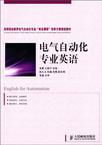电气自动化专业英语
2010-10
人民邮电
黄星//王晓平
239
《电气自动化专业英语》是高职高专基础英语的后续衔接教材。力求向学生提供未来工作岗位所需的必备专业英语知识。本教材依照《高职高专教育英语课程教学基本要求(试行)》的标准,本着培养高级应用型人才的总体目标及专业的实际需要,结合企业岗位的实际编写而成。全书共设10个单元,每个单元共设4个模块。 1.专业阅读(TechnicalandPractical'Reading)着重培养学生专业英语的阅读能力。它包括两篇文章:A篇精讲,突出自动化专业的基础与常识;B篇泛读,补充或扩展专业知识,以扩大学生视野。 文章(500-650字)既涵盖自动化专业的基础内容,也包括当今自动化专业方面的最新发展、最新工艺、最新设备及最近技术等。2.专业认知(Glanceata…)本部分主要帮助学生了解自动化原理、知识及设备常用知识、部件名称、使用功能及应用范畴,是学生到实训基地与企业实习的必学专业英语内容。 所学内容与企业实际应用形成衔接,所以本部分内容是有助于提高学生实际应用能力的一大亮点。 3.实际应用(Putin Llse) SectionA:“技能认知”——TestYour Skill。本部分提供了与企业生产紧密相关的自动化设备及辅助配件等资料图片,让学生感受一下专业英语如何应用; SectionB:“试试你的动手能力”——Havea Try为实践上述所学常用设备及辅助配件知识,让学生通过所学专业英语进行实践。 同时,在其他的练习中配有相应的简单产品广告、配件说明书、操作与使用指南等应用文翻译。
本书系高职高专学生完成基础英语后,进行专业学习的英语衔接教材,旨在满足电气自动化及相关专业学生及行业从业人员学习专业英语的需要。 《电气自动化专业英语》依照高职高专的培养目标及企业的实际要求,突出“实用、可用、好用、用得上”的原则;在内容编排上突出贴近企业,贴近实际,贴近岗位,并力求通俗、易懂、好学、可用。 全书共含10个单元,每个单元都力求与企业生产岗位紧密衔接。 本书既可作为高职高专、成人高校及相关院校的专业英语教材,也可用作企业培训教材,还可供相关教师、学生及技术人员学习参考。
黄星
男,教授,吉林省教学名师。研究方向:语言教学、ESP教学研究、语言测试。目前担任的社会职务有,教育部高等学校高职高专英语类专业教学指导委员会分会委员,中国职业技术教育委员会教学工作委员会高职英语教学研究会副主任,吉林省外语学会高职高专分会副会长兼学
Unit 1 Introduction to Electronic Components PartⅠ Technical and Practical Reading Reading A Electronic Components(Ⅰ) Notes New Words Phrases and Expressions Reading B Electronic Components(Ⅱ) New Words Phrases and Expressions PartⅡ Glance at the Structure of the Electronic Components PartⅢ Put into Use Section A Test Your Skill Section B Have a Try PartⅣ Broaden Your Horizon-Practical Activity Unit 2 Introduction to Basic Electronic Circuits PartⅠ Technical and Practical Reading Reading A Electronic Circuits(Ⅰ) Notes New Words Phrases and Expressions Reading B Electronic Circuits(Ⅱ) New Words Phrases and Expressions PartⅡ Glance at the Structure of the Circuit PartⅢ Put into Use Section A Test Your Skill Section B Have a Try PartⅣ Broaden Your Horizon——Practical ActivityUnit 3 Introduction to Digital Electronics PartⅠ Technical and Practical Reading Reading A Digital Electronics(Ⅰ) Notes New Words Phrases and Expressions Reading B Digital Electronics(Ⅱ) New Words Phrases and Expressions PartⅡ Glance at the Structure of the Integrated Circuit PartⅢ Put into Use Section A Test Your Skill Section B Have a Try PartⅣ Broaden Your Horizon-Practical ActivityUnit 4 Introduction to Analog Electronics PartⅠ Technical and Practical Reading Reading A Analog Electronics(Ⅰ) Notes New Words Phrases and Expressions Reading B Analog Electronics(Ⅱ) New Words Phrases and Expressions PartⅡ Glance at the Structure of the Electronic Component PartⅢ Put into Use Section A Test Your Skill Section B Have a Try PartⅣ Broaden Your Horizon-Practical ActivityUnit 5 Introduction to Sensors PartⅠ Technical and Practical Reading Reading A Basic Sensors Notes New Words Phrases and Expressions Reading B Application of Sensors New Words Phrases and Expressions PartⅡ Glance at the Structure of the Sensor PartⅢ Put into Use Section A Test Your Skill Section B Have a Try PartⅣ Broaden Your Horizon-Practical Activity Unit 6 Application of Electromotor 82 PartⅠ Technical and Practical Reading Reading A What Is Alternating Current(AC) Notes New Words Phrases and Expressions Reading B DC Motor New Words Phrases and Expressions PartⅡ Glance at the Structure of the Motor PartⅢ Put into Use Section A Test Your Skill Section B Have a Try 94 PartⅣ Broaden Your Horizon-Practical ActivityUnit 7 Introduction to Programmable Logic Controller PartⅠ Technical and Practical Reading Reading A Programmable Logic Controller(Ⅰ) Notes New Words Phrases and Expressions Reading B Programmable Logic Controller(Ⅱ) New Words Phrases and Expressions PartⅡ Glance at the Structure of the PLC PartⅢ Put into Use Section A Test Your Skill Section B Have a Try PartⅣ Broaden Your Horizon-Practical Activity 111 Unit 8 Introduction to Automatic Control System PartⅠ Technical and Practical Reading Reading A Automatic Control System(Ⅰ) Notes New Words Phrases and Expressions Reading B Automatic Control System(Ⅱ) New Words Phrases and Expressions PartⅡ Glance at the Structure of the Timer Pin Connection PartⅢ Put into Use Section A Test Your Skill Section B Have a Try PartⅣ Broaden Your Horizon-Practical ActivityUnit 9 Introduction to Basic Microcontroller PartⅠ Technical and Practical Reading Reading A The Microcontroller(Ⅰ) Notes New Words Phrases and Expressions Reading B The Micro-controller(Ⅱ) New Words Phrases and Expressions PartⅡ Glance at the Structure of the Microcontroller PartⅢ Put into Use Section A Test Your Skill Section B Have a Try 146 PartⅣ Broaden Your Horizon-Practical Activity 148 Unit 10 Introduction to Robots PartⅠ Technical and Practical Reading Reading A Basic Robots Notes New Words Phrases and Expressions Reading B Robotic Figures: Hands Design New Words Phrases and Expressions PartⅡ Glance at the Structure of the Robot PartⅢ Put into Use Section A Test Your Skill Section B Have a Try PartⅣ Broaden Your Horizon-Practical Activity Glossary Phrases and Expressions课文参考译文 第一单元 电子元件简介 课文A 电子元件(Ⅰ) 课文B 电子元件(Ⅱ) 铝电解质电容器说明书 第二单元 基本电子电路简介 课文A 电子电路(Ⅰ) 课文B 电子电路(Ⅱ) 多层(盲孔)印刷布线板 第三单元 数字电子电路简介 课文A 数字电子电路(Ⅰ) 课文B 数字电子电路(Ⅱ) 415系列金属氧化物/2瓦碳膜电阻器 第四单元 模拟电子技术简介 课文A 模拟电子技术(Ⅰ) 课文B 模拟电子技术(Ⅱ) 整流器和晶闸管 第五单元 传感器简介 课文A 传感器 课文B 压力传感器的应用 光电传感器 第六单元 电机的应用 课文A 什么是交流电(AC) 课文B 直流电动机 三相异步电机 第七单元 可编程逻辑控制器简介 课文A 可编程逻辑控制器(Ⅰ) 课文B 可编程逻辑控制器(Ⅱ) 可编程逻辑控制器:EH-150 第八单元 自动控制系统简介 课文A 自动控制系统(Ⅰ) 课文B 自动控制系统(Ⅱ) M20全配置继电器 第九单元 基本微控制器简介 课文A 微控制器(Ⅰ) 课文B 微控制器(Ⅱ) LPC2148 ARM7型32位微控制器教学板 第十单元 机器人简介 课文A 基本型机器人 课文B 机器人的外形:手部设计 FANUC S-900iB系列机器人参考文献
Memory is the component that stores information, programs, and data in a PLC. The process of putting new information into a memory location is called writing. The process of retrieving in formation from a memory location is called reading. The common types of memory used in PLCs are Read Only Memory (ROM) and Random Access Memory (RAM). A ROM location can be read, but not written. ROM is used to storepro grams and data that should not be altered.Input Modules and Output Modules A PLC is a control device. It takes information from inputs and makes decisions to energize or deenergize outputs. The input devices used with a PLC include pushbuttons, limit switches, relay contacts, photo sensors, proximity switches, temperature sensors, and the like (Figure 7-2). These input devices can be AC or DC. The input voltages can be high or low. The input signals can be digital or an alog.Differing inputs require different input modules. ……
《电气自动化专业英语》是图文并茂,以图释文,学练结合,以练为先,重点突出,贵在实践。
